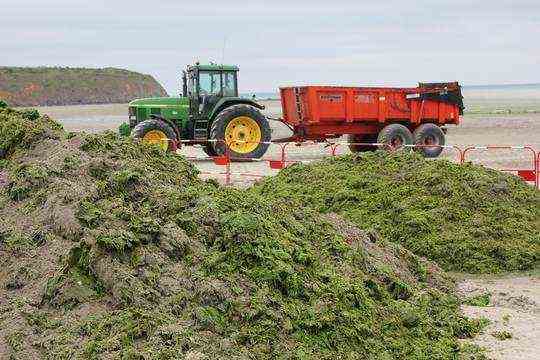The official presentation of the document will only take place this Tuesday at the beginning of the afternoon in Saint-Michel-en-Grève (Côtes-d’Armor). But we already know the conclusions of the report of the Court of Auditors which looked into the thorny issue of green algae in Brittany. And they are not kind to the public authorities. In its block of 277 pages posted online in early July, the Court of Auditors points to the effectiveness of the anti-proliferation plans put in place between 2007 and 2020, considering that the objectives were “ill-defined” and that their effects were “uncertain on water quality”.
There has certainly been better with a slight decrease in strandings observed on sandy sites throughout the region, and in particular in the eight bays concerned by the control plan. But at the same time, the trend is on the rise in the mudflats and stranding peaks still took place in 2017 and 2019. In recent weeks, the bay of Saint-Brieuc has also had to face a green tide with massive strandings that have resulted in the closure of several beaches in recent days in Hillion.
Reelected regional president at the beginning of July, Loïg Chesnais-Girard is not ostrich. If he underlines “that there has been progress, such as the drop in the concentration of nitrates in rivers by 42% since the 2000s”, he nevertheless recognizes that “the battle is not won” and that there is “still a lot of work to do”. But he calls for more resources for this. “We have the will to go further,” he assures us. But I do not have the means that I should have to carry out this project ”.
“Modest expenses” or even “derisory”
The report of the Court of Auditors refers precisely to the lack of public money devoted to the fight against green algae in Brittany. Over the period 2001-2019, 109 million euros were thus committed, including 15 million by the region over the past five years, to try to stem the phenomenon. “Modest expenses”, estimate the magistrates of the Court of Auditors, who even consider them “derisory” in view of the 435 to 614 million euros of aid paid per year under the first pillar of the Common Agricultural Policy in Brittany.
Faced with a severe report, Loïg Chesnais-Girard accepts to take his “share of responsibilities”. Following the recommendations of the report, it thus plans to extend the control system to mudflats and to “continue to strengthen and refine our policies to support agriculture”. On this last point, this involves in particular the Maec contracts (Agri-environmental and climatic measures) which make it possible to support farms by changing their practices.
If he plans to extend them to vegetables, Loïg Chesnais-Girard specifies, however, that in 2023 he will no longer have control over these contracts, which will be managed by the State and no longer the regions. “I regret this backtracking”, underlines the Breton elected official, who touched two words on the Minister of Agriculture Julien Denormandie a week ago during his visit to Carhaix. Loïg Chesnais-Girard has also long been hoping for a regionalization of the CAP in order to have more means to act on his territory. “The CAP should not be just a regulation, we must also put money on the table,” he believes.

